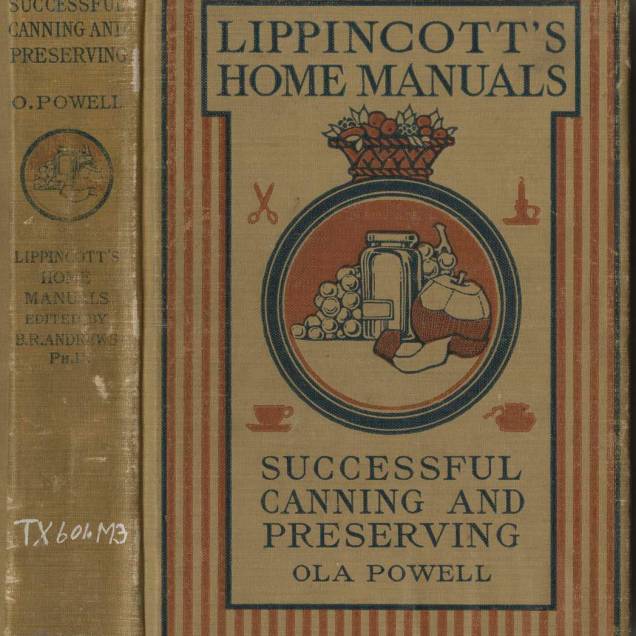Picking up on the theme from earlier this month, I thought it might be fun to continue some cooking school lessons over the summer. So, this week, we’re looking at Ola Powell’s Successful Canning and Preserving; Practical Hand Book for Schools, Clubs, and Home Use, published in 1917.
Each chapter includes a LOT of informational content, but each is also punctuated by photographs and illustrations throughout. Since the book is really designed to be a lesson book, though not exactly a text book, it does come complete with built-in quizzes. The end of every chapter includes a list of questions about the content, so you can make sure that learning has really soaked in and been preserved (pun intended, of course). The chapters cover the foods you would expect: fruits, veggies, pickles and relishes, jellies, preserves/conserves/marmalades, and fruit juices. But it also includes chapters on the history and safety of canning and preserving, techniques, drying foods for preservation, canning as a business, and teaching canning.
The diversity of this content is an important reflection on the significance of canning and food preservation. It was a necessity for feeding a family, but it was also a social activity, a profit-making opportunity, and clearly integrated into many aspects of domestic and home life, whether rural or urban.
Ola Powell was an extension agent by training and that surely shows. In addition to the many editions of Successful Canning and Preserving; Practical Hand Book for Schools, Clubs, and Home Use, between the mid 1910s- and the early 1940s, she also authored or co-authored works on a variety of other topics, including making and caring for mattresses and bedding, sewing, plants and plant diseases, home demonstration work, and farm and garden management.
You can find Successful Canning and Preserving; Practical Hand Book for Schools, Clubs, and Home Use in its entirely among the scanned books from Special Collections online. You know, in case you’re looking for a good mushroom ketchup recipe or a few trivia questions on the advantages of canning in tin versus glass.
Until our next summer school lesson, stay cool and enjoy something tasty…

























































